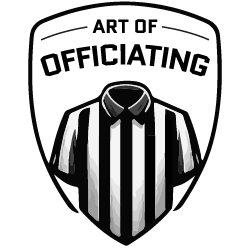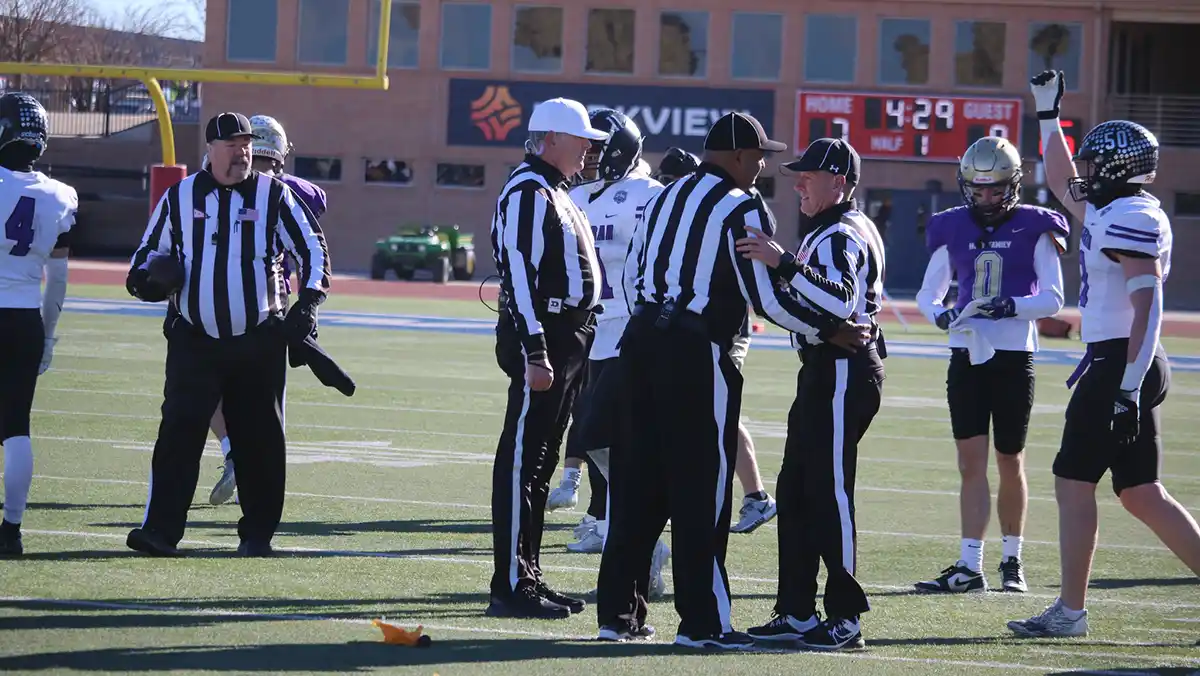K12 free kicks the ball from the K-40. The HL throws a flag at the R-20 when R10 blocks K55 below the waist. R33 picks up the grounded kick at the R-5 and is downed at the R-12.
The HL reports the foul to the R: “I have a block below the waist on R10 at the R-20. I like the spot of my flag.”
So what’s the problem here?
The timing of the foul matters
Did the foul happen during the loose ball play (before R33 recovered the ball while the status of the ball was still a kick) or during the running play (after R33 recovered the ball and the kick ended)?
The basic spot for a foul during a loose ball play is the previous spot. The basic spot for a foul during a running play is the end of the run.
It may be very difficult for the HL to determine exactly when the foul occurred in relation to the end of the kick and the start of the running play. When the HL throws the flag, he should take a quick glance to determine if the runner has the ball.
If the foul happened during the kick:
“The foul happened during the kick before the runner possessed the ball. I have a block below the waist on R10 at the R-20. If K accepts the penalty, we’ll rekick from the R-45. Or Team K can decline the penalty and take the result of the play.” (R will snap the ball from the R-12.)
If the foul happened during the running play:
“The foul happened during R33’s run. I have a block below the waist on R10 at the R-20. The end of the run is the R-12. We’ll enforce the foul half the distance to the goal to the R-6.”
Here is an example of when timing mattered during a scrimmage play. The ball was snapped from the A-20. The umpire threw a flag for illegal use of hands (hand to the face) on the left defensive end. He observed the foul before the receiver possessed the ball, so even though his flag came out during the run, the foul was not enforced from the end of the run (the A-25). The crew correctly enforced the foul from the previous spot.

